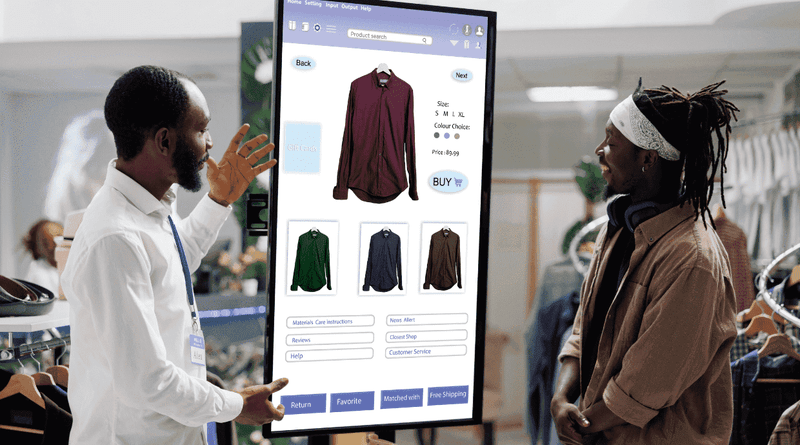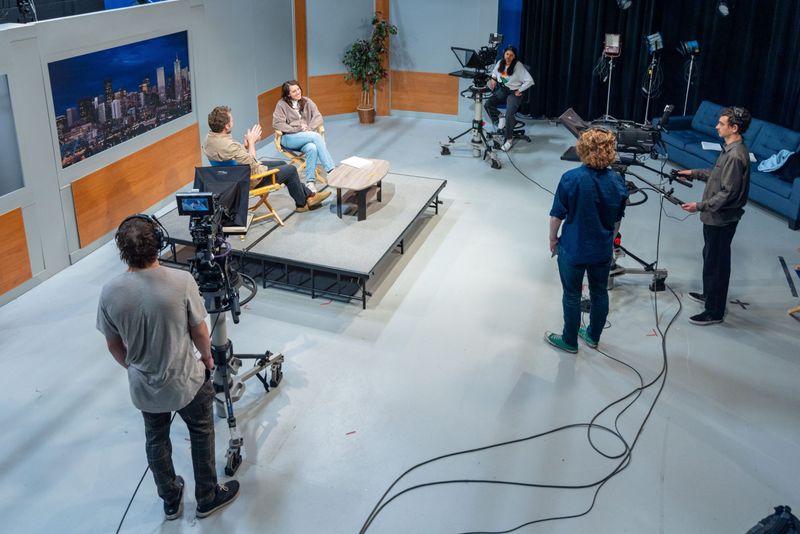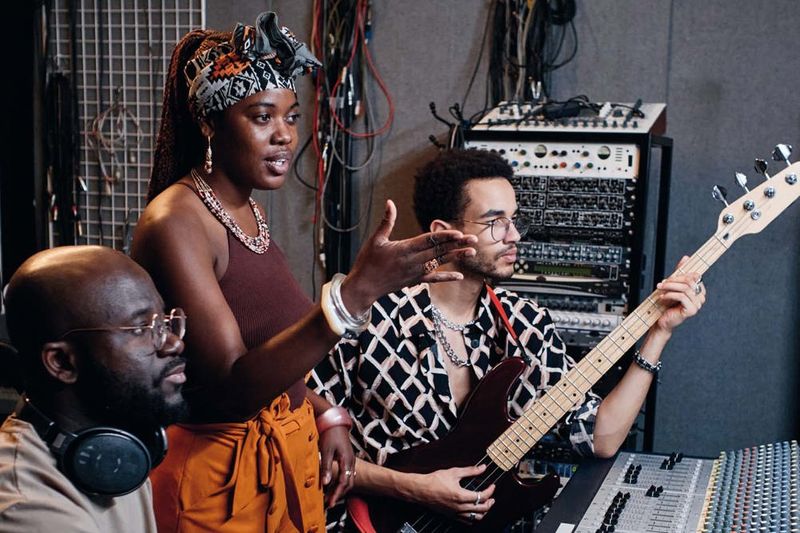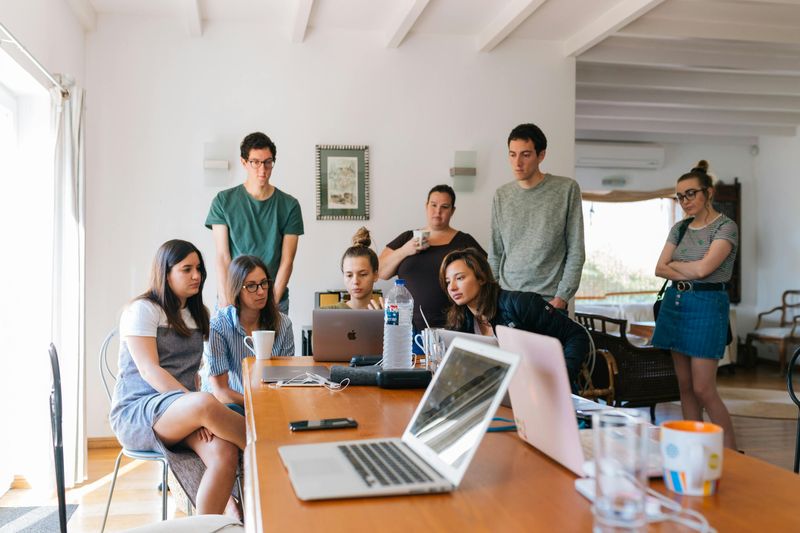In today’s rapidly shifting job market, certain industries have shown a notable trend of undervaluing older workers. Despite the wealth of experience and stability that seasoned professionals offer, age bias can subtly seep into hiring and employment practices. Whether it’s the fast-paced tech startups craving youthful innovation, or the ever-trendy fashion industry seeking fresh faces, older workers often find themselves marginalized. This isn’t just a loss for the individuals affected, but also a missed opportunity for companies to leverage the diverse perspectives and skills of a multigenerational workforce. Here, we explore 16 workplaces where older workers increasingly feel unwelcome, unraveling the dynamics and biases at play.
1. Tech Startups

Tech startups are often seen as the playground of the young and the innovative. With open-plan offices filled with the latest gadgets and a culture of rapid change, these environments can feel alienating to older workers. The pursuit of the ‘next big thing’ often translates into a preference for fresh graduates full of new ideas, overlooking the deep well of experience older professionals bring.
This youth-centric bias can lead to a loss of institutional knowledge and a lack of diverse perspectives in tech development. Ultimately, while innovation is crucial, the dismissal of seasoned expertise can hinder sustainable growth.
2. Advertising & Creative Agencies

In the vibrant world of advertising, the race to stay ahead of trends is relentless. Creative agencies often prioritize youthful energy and the latest trends, leaving older creatives in the shadows. The industry’s obsession with Gen Z culture and aesthetic agility means that ‘fresh faces’ are often more valued than seasoned professionals.
This focus on youth can result in a lack of historical context and strategic depth in creative campaigns. Older workers possess a rich understanding of brand evolution and audience dynamics, offering insights that younger colleagues might miss.
3. Fashion & Beauty

Fashion and beauty industries are notoriously youth-centric, often touting a vibrant and modern image. This focus on youth can marginalize older workers, particularly in public-facing roles or content creation. A youthful image is often prioritized over experience, which can lead to a narrow representation of beauty and style.
By sidelining older workers, these industries miss out on rich narratives and diverse perspectives that could appeal to a broader audience. Experience in understanding trends and consumer behavior is invaluable, yet it’s often overshadowed by the allure of youthful aesthetics.
4. Media & Entertainment

The media and entertainment sectors are driven by relevance and ratings, which can often mean favoring younger voices. Whether in broadcast news or on digital platforms, there’s a trend of replacing older, seasoned hosts with their younger counterparts. The belief is that younger faces might attract a more youthful audience.
While fresh perspectives are vital, the wisdom and depth of experience that older professionals bring can enhance the quality of content. The lack of age diversity can also lead to a narrow representation of societal stories and viewpoints.
5. Retail (Especially Fashion or Electronics)

Retail environments, particularly in fashion and electronics, tend to prize youthful enthusiasm. The perception that older workers are ‘less adaptable’ can lead to a preference for younger staff who project a brand’s desired image. This bias can be seen on the shop floor, where younger employees are often more visible.
However, older workers bring a wealth of customer service experience and an understanding of product history that can enhance the shopping experience. Age diversity in retail teams can lead to richer customer interactions and improved sales strategies.
6. Corporate Marketing Departments

In the fast-evolving world of corporate marketing, digital prowess is often equated with youth. Older marketers might be unfairly perceived as out of touch with the latest trends or digital platforms. This age bias can result in overlooking seasoned marketers who have navigated various market shifts.
The strategic insight that comes from years of experience is invaluable in crafting campaigns that resonate across generations. When older professionals are sidelined, companies miss out on the blend of innovation and experience needed for effective marketing.
7. Hospitality & Events

The hospitality and events industry thrives on energy and excitement, often associating these traits with youth. Guest-facing roles in hotels, restaurants, and events tend to favor younger staff who are perceived to be more energetic. This preference can lead to age bias, where experienced older workers find fewer opportunities.
While youthful enthusiasm is valuable, the reliability and problem-solving skills of older workers are crucial for seamless guest experiences. Balancing age diversity can enhance service quality and cater to a wider range of clientele.
8. Sales & Real Estate

In the high-pressure world of sales and real estate, the narrative of ‘brand freshness’ often sidelines older professionals. The perception is that younger agents might connect better with contemporary clients. However, this overlooks the depth of client understanding and negotiation skills that years in the industry bring.
Older salespeople offer a nuanced awareness of client needs and market trends. A balanced team with both youthful energy and seasoned expertise can adapt to varied client preferences effectively.
9. Film & Television Production

Behind the scenes in film and television, the push for younger (and often cheaper) talent can limit opportunities for experienced crew members. The assumption that younger professionals are more in tune with the latest tech and trends can overshadow the seasoned insight older crews provide.
The value of experience in managing complex shoots, understanding narrative pacing, and ensuring safety on set cannot be understated. Embracing age diversity can enhance production quality and foster a collaborative learning environment.
10. Design (Graphic, UI/UX, Digital)

Design firms often seek out trend-savvy youth, assuming that older designers lack digital fluency. This bias overlooks the creative depth and problem-solving skills seasoned designers bring to the table. While staying updated with trends is essential, experience in design thinking processes enriches project outcomes.
A diverse design team, inclusive of varied age groups, can offer innovative solutions that appeal to broader audiences. The blend of youth and experience fosters a dynamic, learning-centric studio culture.
11. Music Industry

The music industry, particularly in roles like A&R and marketing, often leans towards younger professionals. The focus on emerging, youth-led subcultures can push aside older workers who possess deep industry knowledge and artist management skills.
While tapping into youthful trends is crucial, the historical context and mentorship that older professionals offer can guide sustainable artist development. A balanced team ensures that both new and veteran artists receive comprehensive support.
12. Corporate Finance (Especially in Startups)

In the startup sphere, corporate finance teams might view older professionals as ‘too traditional’ or misaligned with the agile, millennial-led culture. This perception can overshadow the strategic insights and risk management skills that experienced finance professionals bring.
The blend of youthful innovation and seasoned financial acumen is crucial for sound fiscal planning and growth. Companies that embrace age diversity in finance teams can navigate financial challenges more effectively.
13. PR & Influencer Marketing Firms

PR and influencer marketing firms thrive in youth-dominated spaces, often chasing the latest viral trends. This focus can marginalize older professionals who possess critical strategy and crisis management skills. While youth brings fresh perspectives, the depth of experience is crucial in handling nuanced public relations challenges.
A diverse team combining the vigor of youth with seasoned insights can craft campaigns that are both trendy and strategically sound. The balance ensures resilience in navigating the fast-paced digital landscape.
14. Education Technology (EdTech)

Despite being all about learning, EdTech startups often underhire older educators in favor of tech-native youth. The assumption is that younger professionals are more attuned to digital learning platforms, overlooking the pedagogical expertise older educators bring.
In reality, combining technological fluency with seasoned educational insights can create more effective learning tools. Age diversity in EdTech teams fosters innovation that respects both technological advancement and educational integrity.
15. Customer Experience & Call Centers

In customer experience roles, particularly call centers, companies often prefer younger staff, attracted by lower wages and speed metrics. This preference disregards the patience and poise older workers bring, which are invaluable during complex customer interactions.
While efficiency is important, the empathy and problem-solving skills that come with experience are essential for long-term customer satisfaction. A balanced team approach can enhance service quality and client trust.
16. Apparel Warehousing & Physical Logistics

In the physically demanding world of apparel warehousing and logistics, age discrimination can be subtle but present. There’s often an assumption that older workers can’t ‘keep up’ with the physical demands, favoring younger hires.
However, experienced logistics workers bring valuable skills in organization and efficiency, reducing errors and improving workflow. Age diversity in logistics fosters a robust operation, balancing youthful energy with methodical precision.

Comments
Loading…